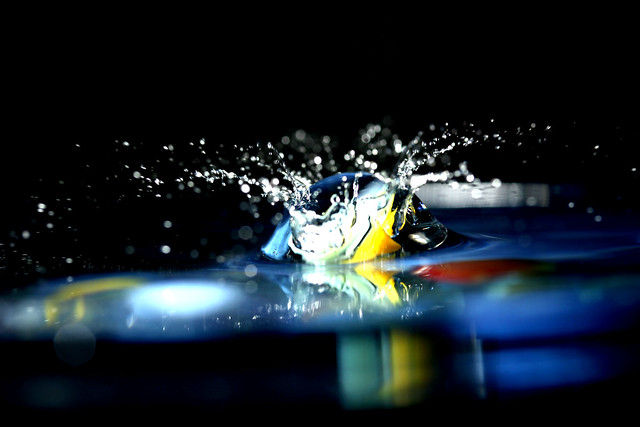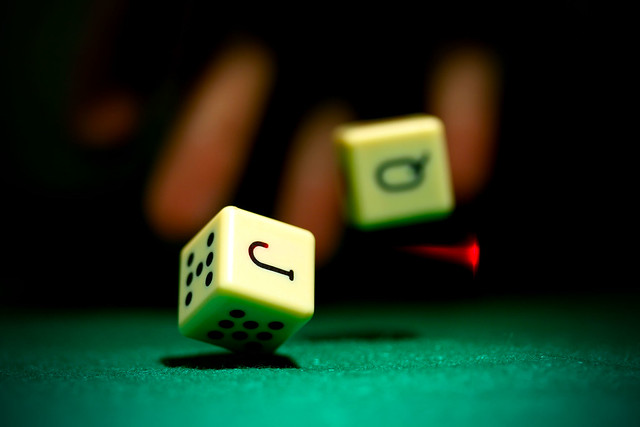Even though I'm getting a really fast response from my circuit, it's not absolutely simultaneous. Besides that, I've discovered that pictures involving splashes can change dramatically in less than 1 millisecond, so I wanted to take control of that.
 I configured the PIC so I was able to display the delay on an LCD screen, and increase it or decrease it with two buttons. This way I could also place the laser above the impact area, then add around 10 milliseconds to wait for the marble to touch the water.
I configured the PIC so I was able to display the delay on an LCD screen, and increase it or decrease it with two buttons. This way I could also place the laser above the impact area, then add around 10 milliseconds to wait for the marble to touch the water.I learnt that flashes control their output by the length of the burst, not the power (brightness) of the light. This means flashes have (ideally) constant output. A 1/2 burst is half the length of a 1/1. This is not exactly true, since flashes (like any other electric device) have start up and cool down delays.
In the end, the effect is the same: longer equals brighter. The speed of the flash burst is usually irrelevant, but when doing high speed photography, long flash bursts mean blurry pictures. Logically, more powerful flashes will allow you to get the same amount of light in a shorter amount of time.
I found some really detailed information about the Canon Speedlite 580EX flash durations. It's worth reading.
According to this page, the duration of the 1/1 flash burst of a 580EX is 1/833 seconds. Back to the example I used before about waving your hand at 1 meter per second (which is not fast at all), you would be moving your hand 0,12 cm in that period of time, which will probably result in an blurry picture.
At power 1/128, the duration of a burst is about 1/35.000 seconds. In that period of time, your hand would move 0,029 mm, which is hardly noticeable.
The picture above was taken with a 480EX II at its lowest setting (1/64).
Below is the code for the PIC with the LCD display. I'm sorry I can't post the code for the LCD, since it's copyrighted:









